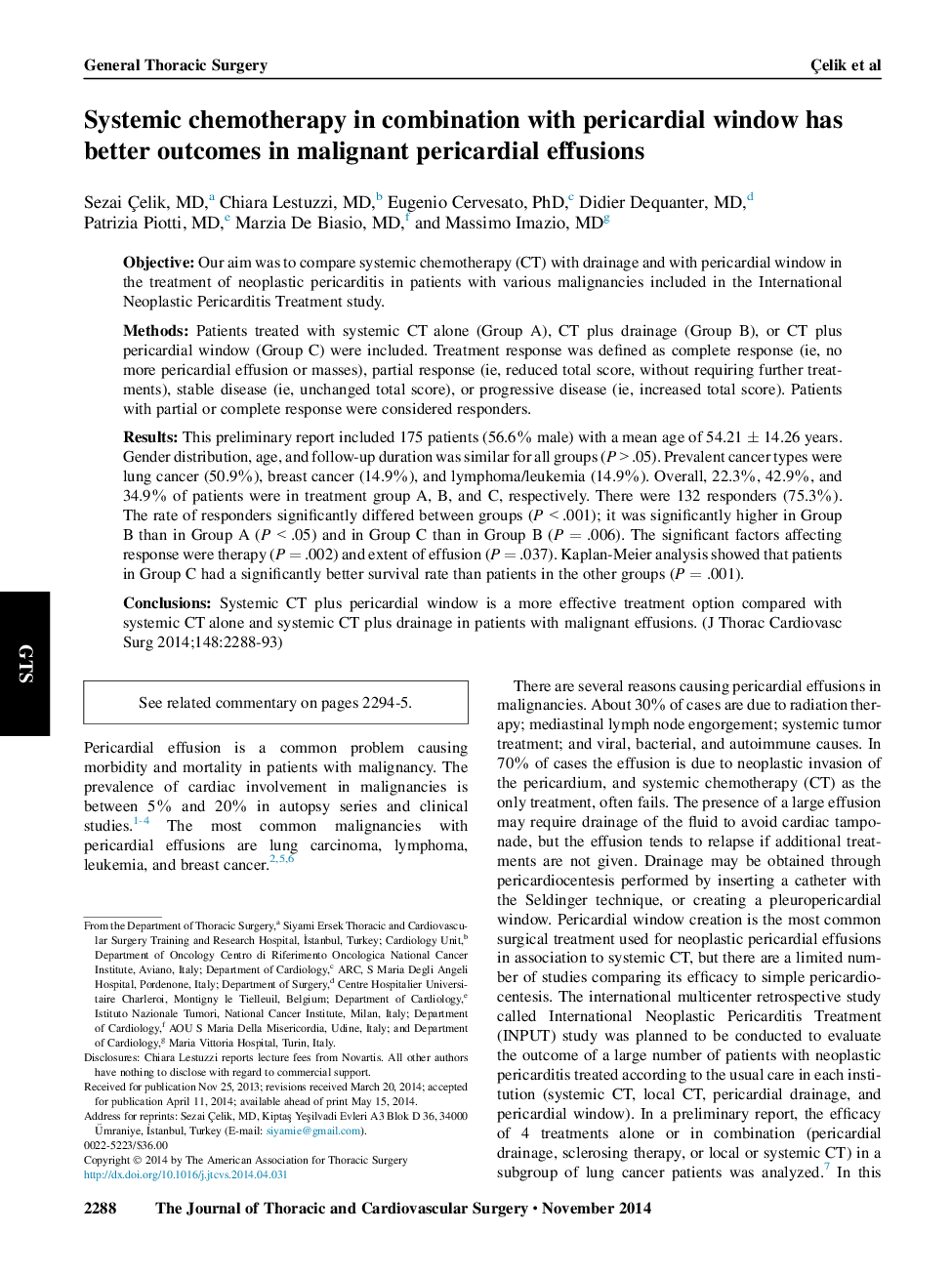| Article ID | Journal | Published Year | Pages | File Type |
|---|---|---|---|---|
| 5989642 | The Journal of Thoracic and Cardiovascular Surgery | 2014 | 6 Pages |
ObjectiveOur aim was to compare systemic chemotherapy (CT) with drainage and with pericardial window in the treatment of neoplastic pericarditis in patients with various malignancies included in the International Neoplastic Pericarditis Treatment study.MethodsPatients treated with systemic CT alone (Group A), CT plus drainage (Group B), or CT plus pericardial window (Group C) were included. Treatment response was defined as complete response (ie, no more pericardial effusion or masses), partial response (ie, reduced total score, without requiring further treatments), stable disease (ie, unchanged total score), or progressive disease (ie, increased total score). Patients with partial or complete response were considered responders.ResultsThis preliminary report included 175 patients (56.6% male) with a mean age of 54.21 ± 14.26 years. Gender distribution, age, and follow-up duration was similar for all groups (P > .05). Prevalent cancer types were lung cancer (50.9%), breast cancer (14.9%), and lymphoma/leukemia (14.9%). Overall, 22.3%, 42.9%, and 34.9% of patients were in treatment group A, B, and C, respectively. There were 132 responders (75.3%). The rate of responders significantly differed between groups (P < .001); it was significantly higher in Group B than in Group A (P < .05) and in Group C than in Group B (P = .006). The significant factors affecting response were therapy (P = .002) and extent of effusion (P = .037). Kaplan-Meier analysis showed that patients in Group C had a significantly better survival rate than patients in the other groups (P = .001).ConclusionsSystemic CT plus pericardial window is a more effective treatment option compared with systemic CT alone and systemic CT plus drainage in patients with malignant effusions.
